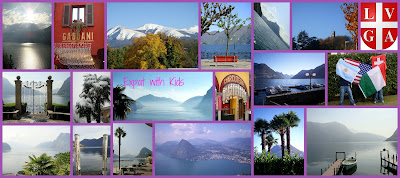"Ninnaò, ninnaò,
questo bimbo a chi lo do
se lo do alla Befana
se lo tiene una settimana
se lo do all'Uomo Nero
se lo tiene un anno intero
ma se il bimbo fa la nanna
se lo tiene la sua mamma"
questo bimbo a chi lo do
se lo do alla Befana
se lo tiene una settimana
se lo do all'Uomo Nero
se lo tiene un anno intero
ma se il bimbo fa la nanna
se lo tiene la sua mamma"
The English translation is:
"Ninnaò, ninnaò,
who will I give this child to
if I give it to the Befana
she will keep him one whole week
if I give it to the Bogey Man
he will keep him one whole year
but if the child goes to sleep
then his mother will him keep"
Depending in which country you live, tomorrow you'll be celebrating Epifany (the day immediately following the twelve days of Christmas), La Befana or Los Reyes Magos.
Particularly in the Spanish-speaking parts of the world the three kings (Los Reyes Magos) receive wish letters from children and magically bring them gifts on the night before Epiphany. In Spain each one of the Magi is supposed to represent one different continent, Europe (Melchior), Asia (Caspar) and Africa (Balthasar). Almost every Spanish city or town organize cabalgatas in the evening, in which the kings and their servants parade and throw sweets to the children (and parents) in attendance.
In Ticino the children await the Befana, an old woman who delivers gifts to children throughout Italy and Ticino on Epiphany Eve.
Christian legend had it that Befana was approached by the biblical magi, also known as the Three Wise Men (or the three kings) a few days before the birth of the Infant Jesus. They asked for directions to where the Son of God was, as they had seen his star in the sky, but she did not know. She provided them with shelter for a night, as she was considered the best housekeeper in the village, with the most pleasant home. The magi invited her to join them on the journey to find the baby Jesus, but she declined, stating she was too busy with her housework. Later, La Befana had a change of heart, and tried to search out the astrologers and Jesus. That night she was not able to find them, so to this day, La Befana is searching for the little baby.
Now La Befana flies around on her broomstick each year on the 11th night, bringing gifts to children in hopes that she might find the Baby Jesus. Children hang their stockings on the evening of January 5 awaiting the visit of La Befana. She leaves all the good children toys and candy (“caramelle”) or fruit, while the bad children get coal (“carbone”). Traditionally, all Italian children may expect to find a lump of "carbone" (actually rock candy made black with caramel coloring) amongst the candy in their stockings, as every child has been at least occasionally bad during the year.



No comments:
Post a Comment